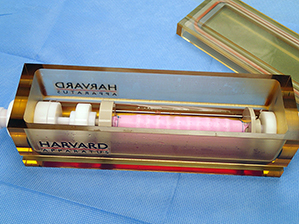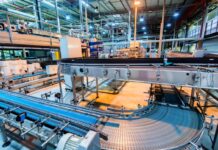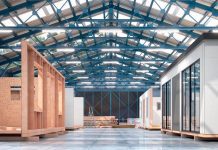Harvard Bioscience is ramping up its production of synthetic tracheas to supply clinical trials with the highly experimental technology which is slowly moving from research labs to manufacturing facilities.

Image credit: MIT Technology Review
Since 2008, surgeons were able to hand a new lifeline to eight patients by replacing their damaged tracheas with synthetic ones. The encouraging results of these trials have seen a Boston-based company prepare the production of scaffolds for growing the synthetic organs on a large scale.
According to the article on MIT Technology Review, Harvard Apparatus Regenerative Technology (HART) is already conducting clinical trials of its synthetic trachea system in Russia, with similar plans in place for trials in the European Union and in the U.S. as well.
Made by growing a patient’s own stem cells on a lab-made scaffold, the technique used for producing synthetic windpipes could soon pave the way for creating other organs, such as kidneys, heart valves etc.
This could address a serious medical need. The waiting lists for vital organs such as hearts, lungs, livers and kidneys are disturbingly long, and many patients die every day waiting for donor organs.
“The only way we are going to meet that real need is to manufacture living organs,” says Joseph Vacanti, a surgeon-scientist at Massachusetts General Hospital and a leader in tissue-engineering research who is not affiliated with HART.
Researchers from all over the world are desperately trying to develop new ways to create tissues for transplantations.
“Over 25 years, the field has gone from fiction and fantasy to science and engineering,” says Vacanti.
The long list of approaches includes precise ink-jet printing of cell types into an organized structure and letting cells spontaneously self-organize into proto-organs, while HART is currently trying to grow a patient’s stem cells on synthetic scaffolds.
This approach provides a good environment for bone marrow stem cells that can then develop into various cell types both in the incubator and after being implanted into a patient.
The scaffolds are made by spinning fibres about a hundredth of the width of a human hair into a tube made to fit each patient. This results in a custom-made scaffold “that makes a mesh that’s the right size for the cells,” says David Green, CEO of HART. “They feel at home there.”
The cells grow on the scaffold in a special incubator for approximately two days before the transplantation procedure takes place. Five days after the surgery, new cells are starting to appear on the organ, including important cells that line the inner surface and help move mucous from the lungs by coughing. In the end, blood vessels are starting to grow into the synthetic organ.



















